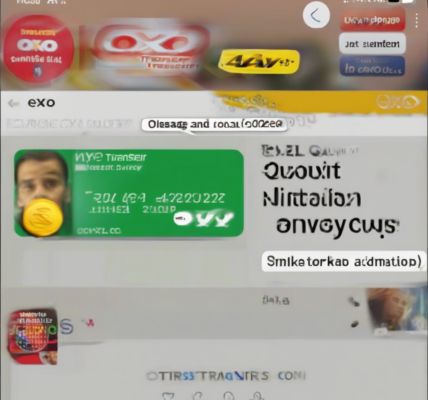Mastering Bank of America Transfer Balances: A Comprehensive Guide
Bank of America offers a variety of ways to transfer balances, catering to different needs and preferences. Understanding these options is crucial for efficient money management and avoiding potential pitfalls. This guide provides a detailed overview of Bank of America’s balance transfer capabilities, covering various methods, associated fees, and important considerations.
Methods for Transferring Balances within Bank of America
- Online Banking: This is the most convenient and frequently used method. Users can log into their Bank of America accounts and initiate internal transfers between checking, savings, and money market accounts with ease. The process is typically instantaneous, offering immediate accessibility to transferred funds.
- Mobile App: Bank of America’s mobile app mirrors the functionality of online banking, allowing for quick and seamless balance transfers from anywhere with an internet connection. This mobile accessibility is particularly beneficial for those on the go.
- ATM Transfers: While less common for larger transfers, Bank of America ATMs allow for transfers between linked accounts. This option provides a convenient way to move smaller amounts of money quickly and securely.
- In-Person at a Branch: For those preferring face-to-face assistance, Bank of America branch locations offer in-person balance transfer services. This method is particularly useful for complex transfers or those needing assistance with the process.
- Telephone Banking: Bank of America provides telephone banking services, enabling customers to initiate transfers by calling customer support. This option is convenient for those who prefer verbal instructions or require assistance with specific transfer requirements.
Transferring Balances Between Bank of America and Other Institutions
Transferring balances to and from other financial institutions requires different approaches, often involving external transfer mechanisms.
- External Account Transfers (Online): Bank of America’s online banking platform allows users to link external accounts from other banks and credit unions. Once linked, funds can be transferred electronically between accounts. This method typically involves providing account details from the external institution.
- Wire Transfers: For larger sums or time-sensitive transfers, wire transfers provide a swift and reliable method. However, wire transfers usually involve fees from both the sending and receiving institutions. Bank of America will provide the necessary information for initiating a wire transfer from another bank.
- ACH Transfers: Automated Clearing House (ACH) transfers are another electronic method for moving funds between accounts at different institutions. ACH transfers are generally slower than wire transfers but typically have lower fees. Bank of America supports ACH transfers both for receiving and sending funds.
- Check Transfers: While less efficient, writing and mailing a check remains a viable method for transferring funds. However, this method involves processing delays associated with mail delivery and check clearing. This is generally not the preferred method for time-sensitive transactions.
Fees Associated with Balance Transfers
It’s crucial to understand the potential fees associated with various balance transfer methods. While many internal transfers within Bank of America are fee-free, external transfers and certain services may incur charges.
- Wire Transfer Fees: Bank of America, like most financial institutions, charges fees for wire transfers, both incoming and outgoing. These fees vary depending on the transfer amount and destination.
- ACH Transfer Fees: While ACH transfers are generally less expensive than wire transfers, some institutions may charge small fees. It’s essential to check with both Bank of America and the receiving institution for any potential fees.
- International Transfer Fees: Transferring funds internationally involves additional fees due to currency conversion and international processing costs. Bank of America’s international transfer fees will vary based on the destination country and the transfer method used.
- Overdraft Fees (Indirect): While not a direct transfer fee, insufficient funds in the source account during a transfer can result in overdraft fees. Careful monitoring of account balances is crucial to avoid these penalties.
Important Considerations When Transferring Balances
Several factors should be carefully considered before initiating any balance transfer to ensure a smooth and secure process.
- Account Verification: Always double-check account numbers and routing numbers before initiating any transfer to ensure funds are sent to the correct destination. Incorrect information can lead to delays or irreversible errors.
- Processing Times: Understand the processing times associated with different transfer methods. Wire transfers are typically instantaneous, while ACH transfers and check transfers can take several business days.
- Transaction Limits: Bank of America may impose limits on the amount that can be transferred per transaction or per day. Familiarize yourself with these limits before initiating large transfers.
- Security Measures: Be vigilant about security measures when transferring funds online or through mobile banking. Use strong passwords, avoid public Wi-Fi networks for sensitive transactions, and report any suspicious activity immediately.
- Account Availability: Ensure that both the source and destination accounts have sufficient funds and are in good standing. Frozen or closed accounts can prevent successful transfers.
- Customer Service: Don’t hesitate to contact Bank of America’s customer service if you encounter any issues or require assistance during the transfer process. Their support team can provide guidance and troubleshoot any problems.
Troubleshooting Common Transfer Issues
Occasionally, issues may arise during balance transfers. Understanding potential problems and their solutions can save time and frustration.
- Transfer Delays: Delays can be due to various factors, including incorrect account information, technical issues, or weekend/holiday processing limitations. Contact Bank of America customer service to investigate the cause of the delay.
- Failed Transfers: Failed transfers often result from insufficient funds, incorrect account information, or security protocols. Review transaction details and contact customer service to resolve the issue.
- Discrepancies in Amounts: If there’s a discrepancy between the transferred amount and the account balance, carefully review transaction records and contact Bank of America to rectify any errors.
- Security Alerts: Bank of America’s security system may flag unusual activity, potentially leading to temporary transfer restrictions. Confirm your identity and provide any necessary information to resolve security alerts.
Utilizing Bank of America’s Resources
Bank of America provides various resources to assist customers with balance transfers and account management.
- Online Help Center: Bank of America’s online help center offers detailed information on balance transfers, FAQs, and troubleshooting guides.
- Mobile App Support: The mobile app provides helpful tutorials and FAQs related to balance transfer functions.
- Customer Service Representatives: Bank of America’s customer service representatives are available to answer questions and provide support via phone, email, or in-person at branch locations.
Conclusion (Omitted as per instructions)




